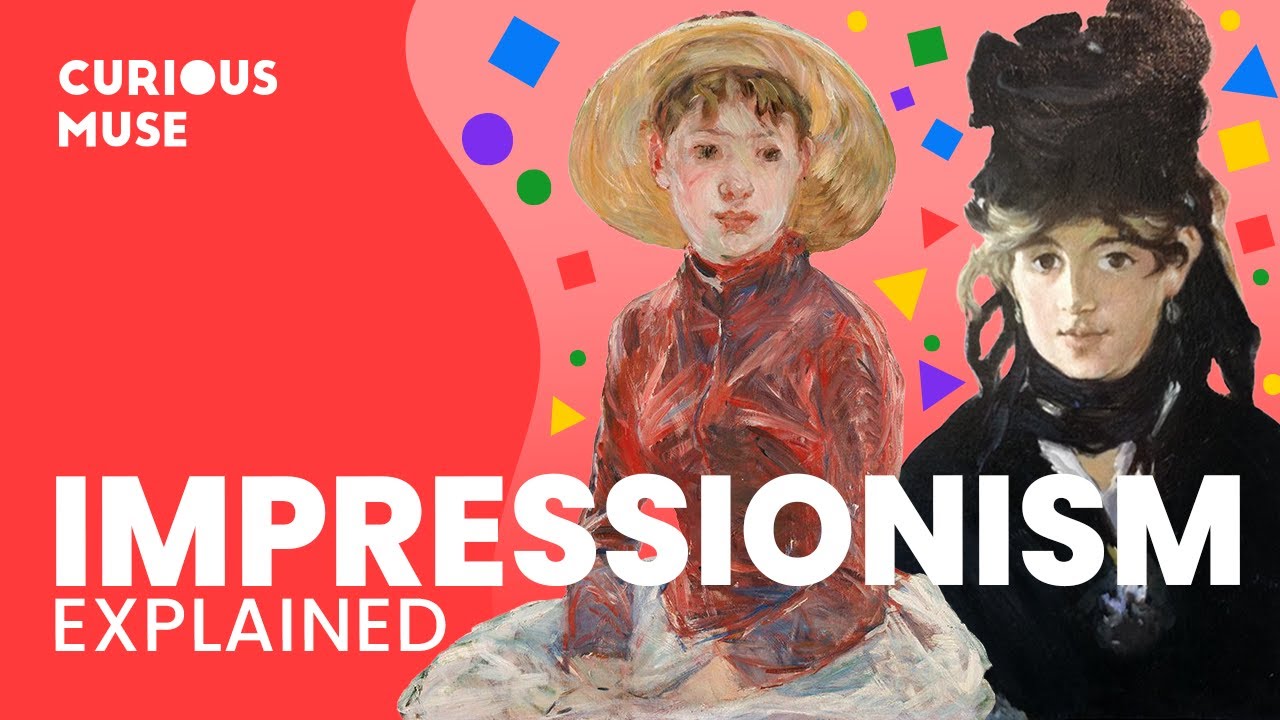L'Impressionismo e il Postimpressionismo
Summary
TLDRThe script outlines the evolution of Impressionism in art during the second half of the 19th century, highlighting key artists like Manet, Monet, Renoir, Degas, and others. It discusses their departure from traditional academic approaches, embracing plein air painting and focusing on light and color effects over intricate detail. Impressionists sought to capture immediate, fleeting moments, breaking away from realism. The post-Impressionist movement led to the development of new styles such as Pointillism and Symbolism, influenced by artists like Seurat, Gauguin, Van Gogh, and Cézanne, who experimented with abstraction and the emotional depth of color and form.
Takeaways
- 😀 The Impressionist movement, emerging in Paris in 1874, shifted focus from traditional academic subjects to the innovative language of painting.
- 😀 Impressionists emphasized painting 'en plein air' (outdoors), capturing fleeting moments of light and color rather than detailed, static images.
- 😀 Claude Monet and Auguste Renoir refined the Impressionist technique, focusing on the optical perception of light and its effect on color.
- 😀 Manet, though admired by the Impressionists, never participated in their exhibitions and is known for rejecting classical techniques in favor of flat color zones.
- 😀 Renoir's work evolved from Impressionism to a more classical style after a trip to Italy, influenced by the Renaissance masters.
- 😀 Edgar Degas, though part of the Impressionist group, differentiated himself by focusing on subjects like dance and urban life, while rejecting 'plein air' painting.
- 😀 The post-Impressionist movement arose after the last Impressionist exhibition in 1886, leading to new artistic directions such as pointillism and symbolism.
- 😀 Georges Seurat developed pointillism, a technique where small color dots create a luminous effect when viewed from a distance.
- 😀 Paul Gauguin moved away from Impressionism to focus on expressing inner emotions, using symbolic colors and simplified forms, particularly in his works from Tahiti.
- 😀 Vincent van Gogh, influenced by the Impressionists, moved towards a more expressive, emotional style, emphasizing dynamic brushwork and intense color contrasts.
- 😀 Paul Cézanne, initially influenced by classical art and Impressionism, later moved towards abstraction, emphasizing the geometry of forms, which foreshadowed Cubism.
Q & A
What was the main shift in art during the second half of the 19th century?
-The main shift was the contrast between the official academic art and new groups of independent artists, particularly the Impressionists, who focused more on the language used to represent reality rather than on traditional subject matter.
What innovation did the Impressionists bring to painting?
-The Impressionists introduced the technique of painting 'en plein air' (outdoors), capturing the immediate effect of light and color as perceived by the human eye, instead of focusing on detailed representations.
How did Claude Monet's approach differ from traditional art techniques?
-Monet's technique involved working on multiple canvases simultaneously, capturing the same subject at different times of the day to reflect changing light conditions and atmospheric effects.
What was Auguste Renoir's perspective on color in shadows?
-Renoir believed that the color of shadows was not simply black or brown but was influenced by the surrounding colors of objects, reflecting his more vibrant approach to color.
How did Edgar Degas' works differ from those of his fellow Impressionists?
-Unlike other Impressionists, Degas focused more on scenes of daily life, such as dancers and horse races, and did not favor the use of light as a dissolving element. He also avoided painting en plein air, preferring studio work.
What marked the transition from Impressionism to Post-Impressionism?
-The transition occurred after the last Impressionist exhibition in 1886, leading to the emergence of new artistic movements like Pointillism and a shift towards more personal and expressive depictions of reality.
What was Georges Seurat's contribution to Post-Impressionism?
-Georges Seurat developed Pointillism, a technique where colors were applied as tiny dots of pure color rather than being mixed on a palette, allowing for a vibrant, luminous effect when viewed from a distance.
How did Paul Gauguin's style evolve over time?
-Gauguin moved away from Impressionism towards a style focused on symbolic use of color and simplified forms, influenced by his time in Brittany and Tahiti, where he sought to represent a more spiritual and idealized version of reality.
What role did Vincent van Gogh play in the evolution of Post-Impressionism?
-Van Gogh, influenced by the Impressionists, abandoned dark colors in favor of complementary hues and developed a highly expressive style with energetic brushstrokes. His works, including self-portraits and landscapes, reflected his inner turmoil.
How did Paul Cézanne's approach to painting differ from the Impressionists?
-Cézanne's work, while initially influenced by Impressionism, focused on structural and geometric analysis of nature. He sought to capture the essence and form of objects through simplification and fragmentation, laying the groundwork for Cubism.
Outlines

This section is available to paid users only. Please upgrade to access this part.
Upgrade NowMindmap

This section is available to paid users only. Please upgrade to access this part.
Upgrade NowKeywords

This section is available to paid users only. Please upgrade to access this part.
Upgrade NowHighlights

This section is available to paid users only. Please upgrade to access this part.
Upgrade NowTranscripts

This section is available to paid users only. Please upgrade to access this part.
Upgrade NowBrowse More Related Video

ARTS 10 / IMPRESSIONISM: 20TH CENTURY ART MOVEMENT / QUARTER 1 / MODULE 2

Brushstrokes (Part 2 of 3) - The 19th Century

(REVISED) ARTS 10 - IMPRESSIONISM / 20TH CENTURY ART MOVEMENT / QUARTER 1

MAPEH Grade 10 ARTS (PART 1) "MODERN ART" (1stQuarter)

Impressionism in 8 Minutes: How It Changed The Course of Art 🎨

The Case for Impressionism
5.0 / 5 (0 votes)